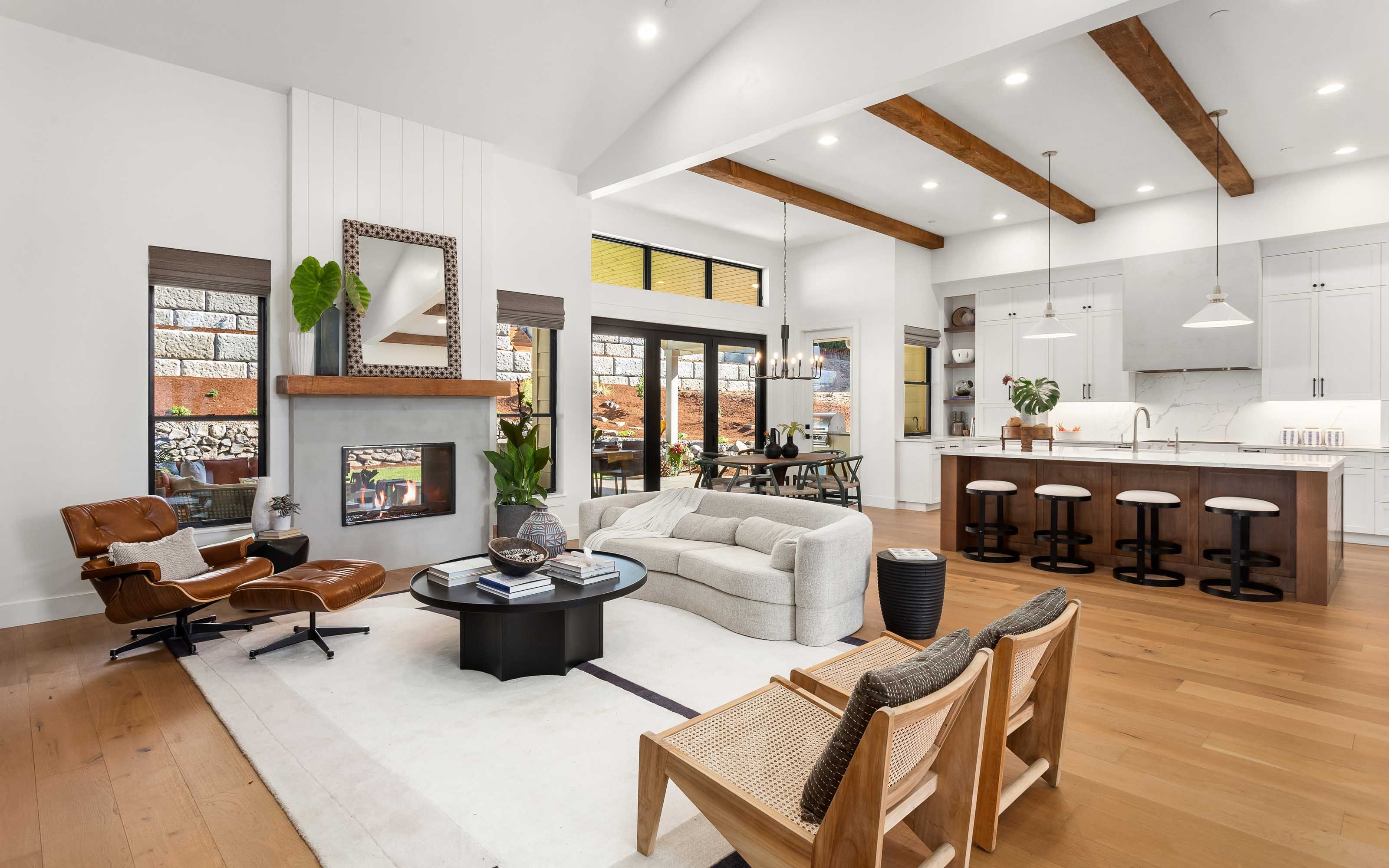Open-Concept vs. Defined Spaces: What’s Best for Your Home?


When it comes to designing or remodeling your home, one of the first big choices is layout. Should you go for the airy, connected feel of an open-concept floor plan or the privacy and structure of defined spaces? This decision impacts not only how your home looks, but also how it functions, feels, and even resells in the future. Let’s break down the pros and cons of each so you can choose the design that best suits your lifestyle.
What is an Open-Concept Layout and Why is it Popular?
An open-concept home removes most walls between the kitchen, dining, and living areas, creating one large, connected space. This design has grown in popularity over the past two decades, largely due to its ability to make a home feel bigger, brighter, and more inviting.
Benefits of Open-Concept Living:
- Better for Entertaining: Guests can mingle without feeling separated into different rooms.
- More Natural Light: Fewer walls mean light from windows can travel farther.
- Family Connection: It’s easier to keep an eye on kids or chat while cooking.
However, open layouts aren’t perfect. Without walls, noise carries more easily, and you have less space for hanging artwork, placing furniture, or creating quiet zones.
What are Defined Spaces and Why Choose Them?
Defined spaces use walls, doors, or partitions to separate rooms for specific purposes. This is the traditional floor plan style, and while it may seem “old school,” it still has many advantages.
Benefits of Defined Spaces:
- Noise Control: Walls help reduce sound transfer between rooms.
- Privacy: Great for households where people have different schedules.
- Temperature Control: Rooms can be heated or cooled separately for efficiency.
On the downside, defined spaces can feel more closed off and darker, especially if windows are limited to certain rooms.
How Do These Layouts Affect Your Lifestyle and Home Value?
Choosing between open and defined spaces isn’t just about looks—it’s about how you live.
- For Social Families: Open layouts make it easier to spend time together, even while doing separate activities.
- For Multi-generational Homes: Defined spaces offer privacy and personal comfort.
- For Resale Value: Many modern buyers still prefer open-concept living, but some are returning to defined rooms after the pandemic made private work-from-home spaces more desirable.
Can You Combine Both Styles?
Absolutely. Many homeowners now opt for semi-open layouts, which combine the airy feel of open-concept spaces with partial walls, glass partitions, or wide archways. This gives you flexibility—open when you want it, privacy when you need it.
The Window Depot: Helping You Create Your Ideal Space
No matter your choice—open, defined, or somewhere in between—the right windows and doors can make your layout shine. Large picture windows can make defined spaces feel bigger, while sliding glass doors can open an airy layout to the outdoors. At The Window Depot, we carry a wide range of windows, doors, and home improvement products to help you bring your vision to life.
Visit us in-store at one of our many locations in Texas, Arizona, New Mexico, and California, or explore our collection online. Start designing the home you’ve always imagined—shop The Window Depot today.
Frequently Asked Questions
Which is more energy-efficient: open-concept or defined spaces?
Defined spaces are generally easier to heat and cool because you can close off unused rooms.
Do open-concept homes cost more to build?
They can be more expensive due to structural reinforcements needed when removing walls.
Can I change my home from defined spaces to an open-concept?
Yes, but you’ll need a contractor to ensure load-bearing walls are handled safely.
Is open-concept better for resale?
Often, yes—but some buyers now prefer private spaces for home offices and quiet areas.
How do I make a defined space feel more open?
Use light paint colors, larger windows, and interior glass doors to brighten the space.

